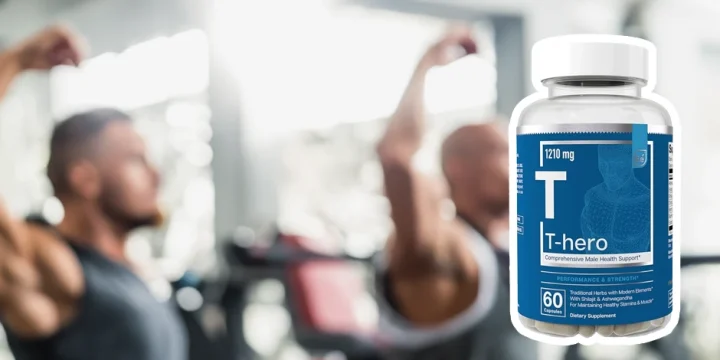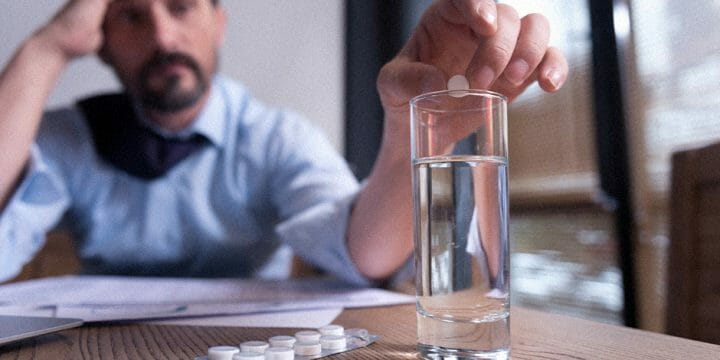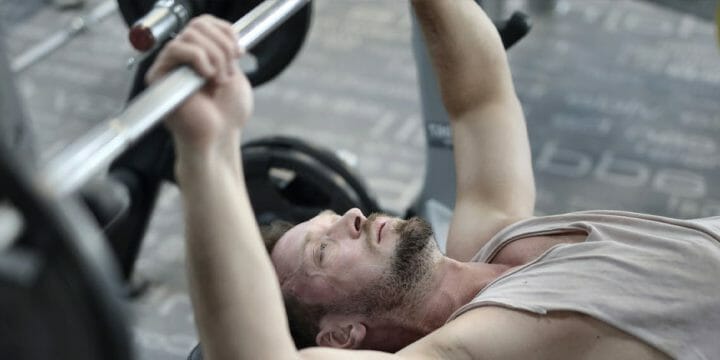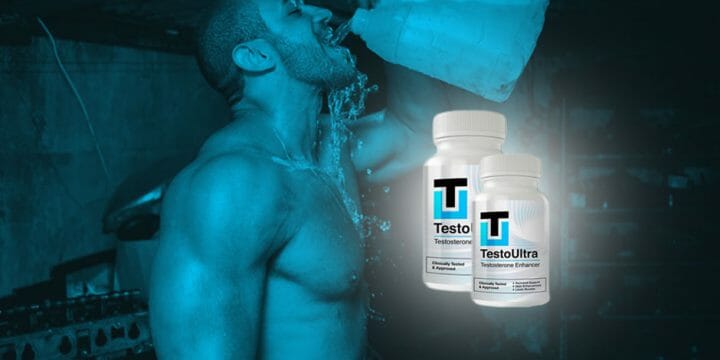Increasing free testosterone can be beneficial on multiple levels, not only for building muscle and increasing sex drive.
For that reason, testosterone pills have long been a mainstay for many health-conscious males. However, I would argue that in certain circumstances women can also reap the benefits of these supplements.
As a doctor, I have seen first-hand what T-boosters can do for women’s health when it comes to losing weight and gaining muscle mass, though it’s crucial to know when it’s safe to include these supplements.
To better understand the science behind this, I worked with a dietitian to give a rundown of what happens if a woman starts taking testosterone booster supplements.
Quick Summary
- Women taking testosterone boosters may experience increased muscle growth, improved fat distribution, enhanced sex drive, better sleep, and mood improvements.
- It's crucial for women to consult with a healthcare professional before starting testosterone supplements due to the potential for serious side effects.
- Testosterone levels peak in women in their 20s and postmenopausal women produce about a quarter of this peak amount, per the Australasian Menopause Society.
- Personally, I believe that testosterone boosters can be beneficial for women, but they should be approached with caution and used under medical supervision to avoid adverse effects.
What Does Testosterone Do for Women?

Testosterone, sometimes called the male hormone, is primarily associated with the male body. But it’s also present in women’s ovaries and adrenal glands, although in smaller amounts.
A study by National Institute of Health shows that the optimal testosterone balance is critical for both genders’ vitality, body composition (muscle growth and fat distribution), sexual function, disease prevention, bone, and general health [1].
According to a 2019 study by the National Institute of Health, testosterone boosters for women are natural supplements that can do a fantastic job for women adjusting their blood testosterone, contributing to faster muscle gain, better mood, sex drive, and better sleep [2].
I cannot stress enough the importance of balance and professional guidance when it comes to testosterone supplements. I've seen cases where excess testosterone led to unwanted side effects.
That's why, in my practice, I always ensure a thorough evaluation before recommending testosterone boosters to my female patients.
“Once a woman decides to add a testosterone booster to the supplement regime, she can start noticing better sleep, energy, strength gains, and muscle gains. And, it is also possible that you may notice recovery in the gym to improve. I would suggest cutting the men’s dose by one-half or a third to start out. Increase in the course of a 12-week cycle. And, I would also add in a support for the liver, such as milk thistle.”
- Tammy Patnode, Head Coach & Founder of Team Tammy Fitness Background
Normal Testosterone Levels For Women
Testosterone in the female body can vary over time, depending on various circumstances.
Normal levels of testosterone have at least three important roles in women:
- They keep women’s bones healthy [3].
- They improve cognitive functions [4].
- They promote a healthy sex drive [5].
Sometimes you’ll experience side effects of too high or too low testosterone. Other times, you might not notice any symptoms at all.
That’s why it’s useful to know what normal T levels look like.
Below you can see the normal total testosterone range for women depending on their age.
Age and Testosterone Range
- 6 months–9 years: <7–20 ng/dL
- 10–11 years: <7–44 ng/dL
- 12–16 years: <7–75 ng/dL
- 17–18 years: < 20–75 ng/dL
- 19+ years: < 8–60 ng/dL
Symptoms of Low Testosterone in Women

Although testosterone is considered a male hormone, low testosterone levels can cause the following symptoms in women [6]:
- Fatigue
- Drowsiness
- Muscle Weakness
- Lowered Bone Density
- Sleep Issues
- Poor Sex Drive
- Vaginal Dryness
- Fertility Issues
- Irregularities In The Menstrual Cycle
- Weight Gain
Just like men, women naturally produce less testosterone as they get older.
Testosterone levels reach their peak when women are in their 20s. According to Australasian Menopause Society, postmenopausal women will produce about a quarter of the peak amount of testosterone [7].
This is normal and doesn’t necessarily call for testosterone therapy.
As recorded by the National Institute of Health (NIH), testosterone therapy is mainly reserved for postmenopausal women that suffer from hypoactive sexual desire disorder (HSDD), which causes a lack of desire or interest [8].
Besides menopause, there are a few other possible causes of low testosterone in women:
- Adrenal insufficiency: Adrenal glands produce small quantities of testosterone in both men and women. Healthline reports that adrenal insufficiency occurs when they’re not working properly [9].
- Hypopituitarism: According to Mayo Clinic, hypopituitarism is a condition in which the pituitary gland isn’t producing enough hormones or fails to produce specific hormones [10], such as testosterone.
- Oophorectomy: Oophorectomy is a surgical procedure that removes women’s ovaries [11]. Since ovaries produce the male sex testosterone hormone, this procedure may result in testosterone deficiency.
- Oral estrogen therapy: Estrogen, the female sex hormone, may reduce testosterone production.
If you suspect you suffer from low testosterone, I suggest you consult your doctor first to determine the cause of your issues.
Establishing Your Testosterone Levels

You can determine your testosterone levels by ordering a blood test through your GP. They’ll probably want to examine your symptoms first before scheduling a test.
They can test you for either total or free testosterone. However, it’s best if you get tested for both.
“Many people will check total testosterone, but forget about free testosterone levels. However, (...) some men may have normal total testosterone levels, but low free testosterone—so if you only test for one and not the other, you and your provider may not be getting the whole picture.”
- Chimene Richa, MD
So, you could have normal total testosterone but low free testosterone. A general test may not show this, and your doctor could get the wrong idea about your state.
Another thing to keep in mind is that testosterone levels tend to fluctuate during the day.
That’s why most experts recommend that you get tested around 10 AM when T levels tend to be at their highest.
You should always consult your healthcare provider if you notice any of these side effects.
Related Article: Does Testosterone Increase During a Menstrual Cycle?
Is It Safe For Women To Take Testosterone Boosters?
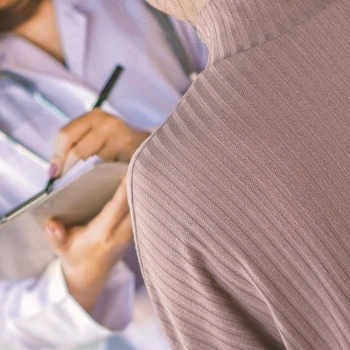
Yes, testosterone boosters are safe for women to take.
Many people mix up testosterone boosters and prohormones, but they are not the same.
When testosterone production is low, prohormones are a type of drug sometimes used in testosterone therapy.
They are not the same as anabolic steroids but, according to NIH, are synthetic chemicals that structurally resemble this hormone [12].
While some early clinical trials of these drugs were promising, later studies by NIH threw some doubts on how effective they are, especially for long-term use [13].
Unlike some invasive interventions like testosterone injections, these boosters are health and dietary supplements that contain natural ingredients like herbs, minerals, and vitamin D.
What Are the Side Effects of Testosterone Boosters in Women?

More testosterone isn’t always better. High levels in women can be just as problematic as the lower ones.
That’s why it’s vital for women taking T-boosters to understand what might happen when there’s too much testosterone in the blood.
Polycystic Ovary Syndrome
Women with increased testosterone levels are at risk of a pattern of symptoms known as PCOS.
This condition can undermine a woman’s sex drive and overall health, causing many health complications such as irregular periods, enlarged ovaries, and even hindered pregnancy and fertility rates.
Hirsutism
Hirsutism is another hormonal condition caused by higher testosterone levels in women. It results in body hair growth in unwanted places, such as the back, face, and chest.
Congenital Adrenal Hyperplasia

CAH directly affects a woman’s adrenal glands, resulting in the overproduction of hormones like testosterone.
This can result in the development of masculine characteristics, such as deepening of the voice, frontal balding, acne, and excessive perspiration.
Hypersexuality
Testosterone is also known as sexual medicine because it increases a woman’s sex drive.
This can be great news for postmenopausal women looking to spice up their sex life yet are hindered by low sexual desire.
As a result, some doctors prescribe androgen-like testosterone or the steroid hormone DHEA to treat low libido among women.
Cardiovascular Diseases

Higher than normal testosterone production levels or long-term use of testosterone drugs may also expose women to cardiovascular diseases such as high blood pressure, stroke, and heart attacks.
This is caused by an increase in bad cholesterol levels, leading to clogs in the arteries and veins.
Weakened Emotional Health
Hormones such as estrogen keep a woman’s emotions balanced and are responsible for regulating diet patterns, balancing their emotional state, and even influencing their sex drive.
When there is an excess of masculine hormones such as androgens and testosterone, balance is disrupted. As a result, a woman’s estrogen levels may become unstable, resulting in emotional instability and a lack of ability to control their behavior.
Interaction with Other Medications and Supplements
Testosterone boosters can interact with medications and supplements commonly used by women, leading to potential health risks.
- For instance, interactions with birth control pills may reduce their effectiveness, increasing the risk of unintended pregnancy.
- Concurrent use with blood thinners can heighten the risk of bleeding disorders, while interactions with antidepressants or mood stabilizers may exacerbate mood-related side effects.
- Additionally, testosterone boosters could impact the efficacy of medications for chronic conditions like diabetes or hypertension.
Women considering testosterone boosters should consult with a healthcare professional to evaluate potential interactions and ensure their safety, as these supplements can affect the metabolism and effectiveness of various drugs and supplements.
How Do Natural Approaches Compare to Testosterone Replacement for Low Testosterone?
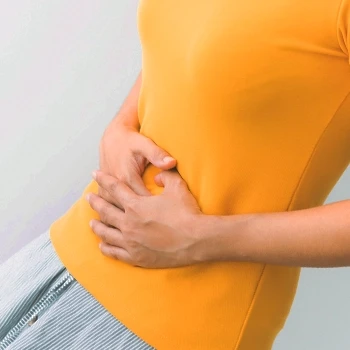
You should treat your high and low testosterone with the help of your doctor, as they will be able to provide a suitable testosterone treatment for you.
Some forms of testosterone treatment, like online testosterone replacement therapy, are an increasingly popular option.
However, there are a few things you can do yourself if you suffer from low testosterone:
- Regular Exercise: Weightlifting and HIIT exercises seem to be especially beneficial for low testosterone.
- Minimize Stress: Cortisol, also known as the human stress hormone, reduces testosterone levels.
- Proper Diet: Try eating more foods that contain protein and healthy fats, such as eggs, liver, and oily fish. Also, include more lentils, beans, and fruits in your diet.
- Testosterone Boosters: Testosterone pills for women either contain testosterone or other substances that stimulate testosterone production, such as zinc and vitamin D.
FAQs
How Many Milligrams of Testosterone Should a Woman Take?
To prevent side effects, a woman should opt for around 0.5–2 mg of testosterone a day.
How Long Does It Take for Testosterone to Work in Females?
It can sometimes take a few months for the full effects of testosterone to work in females; a 3-6 month trial is often recommended.
Do Women Produce Testosterone?
What Causes High Testosterone in Women?
Polycystic ovary syndrome (PCOS), adrenal gland disorders, and certain medications, like hormonal contraceptives or mood stabilizers, can cause high testosterone in women.
How to Increase Testosterone in Women Naturally?
How to Lower Testosterone in Women Naturally?
References:
- https://pubmed.ncbi.nlm.nih.gov/26358173/
- https://www.ncbi.nlm.nih.gov/pmc/articles/PMC6329173/
- https://www.ncbi.nlm.nih.gov/pmc/articles/PMC5036835/
- https://academic.oup.com/jcem/article/99/10/3489/2836272
- https://www.webmd.com/sexual-conditions/sexual-health-stds
- https://www.medicalnewstoday.com/articles/322663
- https://www.menopause.org.au/health-info/resources/testosterone-and-women
- https://pubmed.ncbi.nlm.nih.gov/27916205/
- https://www.healthline.com/health/low-testosterone-in-women
- https://www.mayoclinic.org/diseases-conditions/hypopituitarism/symptoms-causes/syc-20351645
- https://www.mayoclinic.org/tests-procedures/oophorectomy/about/pac-20385030
- https://pubmed.ncbi.nlm.nih.gov/16888459/
- https://pubmed.ncbi.nlm.nih.gov/12671199/
About The Author
You May Also Like
